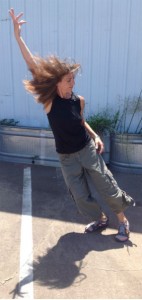Tunes Tuesday: Dance Teachers and Their Tunes
Hey, Framers! We’ve recently decided to add a new layer to our Tuesday column. This fun edition to Tuesday Tunes involves interviewing dance teachers, asking a few questions and what music they enjoy playing during their classes. To start us off with a spark, we’re joined by choreographer, dancer, and teacher, Leslie Scates.Tuesday Tunes: Leslie Scates
R: Why do you find it important to share your passion and knowledge of dance with others?
L: I find it important to share the work I do in dance with others because it is the primary way that the language and history of dance is transmitted across people and generations. I also really really really enjoy moving with other people…communicating non verbally and sharing real time experiences together.
R: How do you imagine the future of the dance world?

L: I imagine the future of the dance world to be even more integrated with regard to sharing technique and creativity by way of digital media. I imagine that students will be learning from instructors through screens, allowing for information sharing from distant locations in immediate moments. I imagine that dance will play even more of a role in neuroscience research and public health. I think that the role of movement, dancing movement and creative practices in particular will be integral in helping people with chronic illnesses and rehabilitation from debilitating physical events. I think the neurological benefits of dancing will become more defined, mainstream information and will have applications in many spheres of public wellness and productivity. I also think dance will continue to have traditional techniques passed on and will continue to evolve alongside visual art and performance art and theatre as a separate medium.
R: I know that you travel often- How has your exposure to many cultures influenced you as a dance maker?
L: Being exposed to many cultures has influenced me as a dance maker in the following ways:
* It allows me to experience and observe people in their movement and communication patterns and customs. I get to see alternate ways of organizing social and personal space and time.
* It gives me opportunities to study dance and dance making with people who have trained and worked in different ways than I have. This is essential. Being a student all my life is what makes me stay creative. I want to learn new ways of approaching the same work. I want to be challenged to do things I haven’t done yet.
* I get to be anonymous. When I travel to study and work in dance, no one, or not many people know who I am, what else I do, and what my work is like at home. This gives me ample space to start at zero and work without baggage. I get feedback on my work that is not attached to my history at home.
* I am fully dedicated to that work at that time. Intensives are called intensive for a reason. It is concentrated, condensed time in practice. To be able to focus on being creative and making work fully for days is a brain changer. I come home with a brain full of new patterns. And then I get to share them with other people. Language passing on…
R: In a typical class, what does your music playlist look like?
L: NO MUSIC!!!
L: BUT I DO LOVE MUSIC AND WORK WITH IT.
Leslie Scates was recently named a Top 100 creative by Houston Press.
Tuesday Tunes